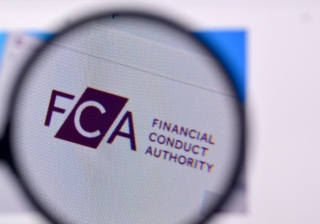The role of conveyancing in buy-to-let transactions
With the stamp duty holiday in effect until March 2021, inquiries for residential properties up to £500,000 have grown dramatically. Many UK residents have realised the opportunity to save money on property purchases, as made possible by favourable Land Tax Stamp Duty adjustments due to Covid-19.

"Property transactions are complicated at the best of times, especially when they’re not regular transactions, and become even more challenging when there’s uncertainty in the housing market"
It seems to be open season on United Kingdom residential properties at the moment, but we’re still faced with the problem of the pandemic, which complicates things substantially. Here is what you should know about the conveyancing process as applicable to buy-to-let transactions:
Conveyancing and buy-to-let
Countless reasons are given by individuals who enter into property purchases or sales: from wanting a perfect family that is suitable to raise a family in, to sourcing investment properties that will generate income through rentals. Buy-to-let conveyancing refers to the legal transfer of property ownership to a buyer whose reason for buying the property is to let it out, and this conveyancing process differs slightly from regular property transactions.
The conveyancer’s role
Purchasing investment properties should be easy, painless, and done in a reasonable period of time (as long as you have the right conveyancer). If no mortgage is involved, buyers can take on the legal processes themselves – but it is often difficult and time-consuming (not to mention frustrating if you’re dealing with a lethargic council). Here’s how conveyancing solicitors are able to handle a buy-to-let transaction and help ensure success for their client:
- Once an offer is accepted, the instructed conveyancer will contact the property seller’s solicitor and request the contract,
- The conveyancing solicitor then raising any concerns regarding the contract, and carries out the necessary inspections,
- A conveyancer should also make sure there are no restrictions regarding renting out the property, and they should advise their client regarding any tax and/or environmental implications,
- If a client is buying with a mortgage, the solicitor will ensure that they are applied for a buy-to-let mortgage (not a regular residential mortgage),
- A completion date is agreed upon between the solicitors once contracts are exchanged, and the conveyancer will prepare a transfer deed,
- The buyer’s conveyancer then draws up a completion statement, carrying out any pre-completion searches and checks,
- On the day of transaction completion, the solicitor will transfer the funds to the seller’s solicitor, and send any stamp duty tax to HMRC,
- Finally, the conveyancing solicitor registers the buyer’s new property in their name with the Land Registry, and that concludes the buy-to-let property transaction.
Choosing the right buy-to-let conveyancer
Property transactions are complicated at the best of times, especially when they’re not regular transactions, and become even more challenging when there’s uncertainty in the housing market (like during Covid-19). This is an ideal time to buy a residential property in the UK, thanks to the stamp duty revisions, and with a confident conveyancing solicitor at your side – you’re guaranteed a seamless, successful buy-to-let property purchase.
Breaking news
Direct to your inbox:
More
stories
you'll love:
This week's biggest stories:
Budget
Budget: Government introduces mansion tax on high-value homes

Budget
Budget: Government introduces £2,000 salary sacrifice cap

Lifetime Isa
Budget: Lifetime ISA to be scrapped in favour of new first-time buyer ISA

Budget
Budget: Property income tax to rise by 2%

FCA
Firms required to report complaints involving vulnerable customers under simplified FCA rules

Santander
Santander joins mortgage price war with new rates from 3.51%
